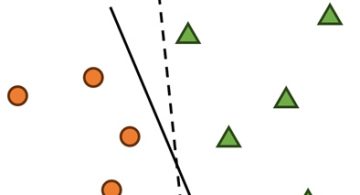開発
Common Sorting Algorithms And Analysis
ZHUOTAO LIAN
In this article, I will introduce five common sorting algorithms namely bubble sort, insertion sort, selection sort, merge sort and quick sort discribed by JavaScript, and analyze the performance and differences between them.
1. Bubble Sort
function bubbleSort(arr){varlength = arr.length;for (vari = 0; i < length; i++){for(varj = 0; j < length-1-i; j++){if(arr[j+1] > arr[j]){vartemp = arr[j];arr[j] = arr[j+1];arr[j+1] = temp;}}}return arr;}
Analysis:
- Stable: Yes
- Worst and Average Case Time Complexity: O(n2)
- Auxiliary Space: O(1)
Bubble Sort is the simplest sorting algorithm that works by repeatedly swapping the adjacent elements if they are in wrong order.
2. Selection Sort
function selectionSort(arr) {varlen = arr.length;varminIndex,temp;for(vari = 0; i < len-1; i++){minIndex = i;for(varj = i+1; j < len;j++){if(arr[j] < arr[minIndex]){minIndex = j;}}temp = arr[i];arr[i] = arr[minIndex];arr[minIndex] = temp;}return arr;}
Analysis:
- Stable: The default implementation is not stable
- Worst and Average Case Time Complexity: O(n2) as there are two nested loops
- Auxiliary Space: O(1). It never makes more than O(n) swaps and can be useful when memory write is a costly operation.
3. Insertion Sort
function insertionSort(arr) {if (Object.prototype.toString.call(arr).slice(8,-1)===’Array’){for(vari =1;i<arr.length;i++){varkey = arr[i];varj = i-1;while(j>=0 && arr[j]>key){arr[j+1]=arr[j];j–;}arr[j+1]=key;}return arr;}else{return ‘arr is not an array!’}}}
Analysis:
- Stable: Yes
- Worst and Average Case Time Complexity: O(n2)
- Auxiliary Space: O(1)
4. Merge Sort
Array.prototype.mergeSort = function () {constrec = (arr) => {if(arr.length===1)returnarr;constmid = Math.floor(arr.length/2);constleft = arr.slice(0,mid);constright = arr.slice(mid, arr.length);constorderleft = rec(left);constorderright = rec(right);constres = [];while(orderleft.length||orderright.length){if(orderleft.length&&orderright.length){res.push(orderleft[0]<orderright[0]?orderleft.shift():orderright.shift())}else if(orderleft.length){res.push(orderleft.shift())}else if(orderright.length){res.push(orderright.shift())}}return res;}
const res = rec(this);res.forEach((n,i)=>{this[i]=n;})}
Analysis:
- Stable: Yes
- Worst and Average Case Time Complexity: O(nlogn)
- Auxiliary Space: O(n)
5. Quick Sort
Array.prototype.quickSort = function () {constrec = (arr) => {if(arr.length <= 1){returnarr;}constleft = [];constright = [];constmid = arr[0];for(leti = 1; i<arr.length; i++){if(arr[i]<mid){left.push(arr[i]);}else{right.push(arr[i])}}return […rec(left),mid,…rec(right)];};constres = rec(this);res.forEach((n,i)=>{this[i]=n})}
Analysis:
- Stable: Not Stable
- Worst Case Time Complexity: O(n2) . The worst case occurs when the partition process always picks greatest or smallest element as pivot.
- Best Case Time Complexity: O(nlogn) . The best case occurs when the partition process always picks the middle element as pivot.
- Auxiliary Space: O(n)
More sorting algorithms, as well as animation demonstrations and details can be found here.
 2025/12/12
2025/12/12 2024/12/06
2024/12/06 2024/09/13
2024/09/13 2024/05/17
2024/05/17 2024/05/10
2024/05/10 2024/01/05
2024/01/05 2023/08/18
2023/08/18 2023/07/14
2023/07/14